ButINeededThatName
Experienced Member
So this past Sunday I made an almost nine-hour round trip to pick up a lot of MicroChannel gear for the bargain of $300. Honestly at that price I really couldn't turn it down. So, one round-trip to the Cincinnati area later and I had come home with the following;
A very sad looking and dirty Model 60 (though I've definitely cleaned worse)
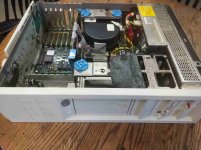
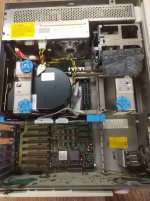
A box of SCSI cables and a box of power cables as well as filler trays and drive rails for the Model 95
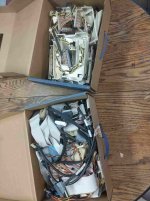
A pair of complete Hot-Plug racks for my Model 95A (FINALLY). I can't tell you how long I've been looking for these
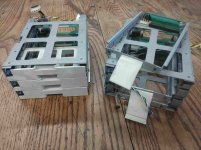
A seemingly NOS 768 Watt Astec PSU, as well as a box of SCSI trays and three SCSI backplanes for the PC Server 500 / 720
A... hold on a minute... A PC Server with six processors? What?
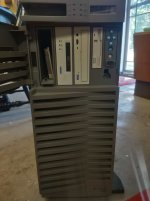
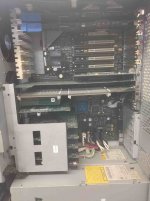
Okay, joking aside I actually had no idea the PC Server 720 was a multi-processor system. From what little information I had about it, I assumed it was effectively a PC Server 500 that just had PCI slots. Turns out I was completely wrong and this in fact is a system capable of taking up to six processors (either 100 / 133 or 166Mhz Pentiums) and 512Mb of ECC memory, or up to five processors and 1Gb of ECC memory. It also has eight combination MicroChannel / PCI slots and much like it's brother, the Server 500, it can take up to eighteen hard-disks. Mine also as a CD-ROM drive, DDS drive, a DDS tape and some floppies that undoubtedly have system software and a backup on them and even the key for the front panel.
I have yet to power it on and test it (want to clean it and check for bad capacitors first), but as of yet I know very little about it. Aside from the page covering parts of it over on Ardent Tool, I've found very little information on specific stuff, like how it utilizes more than one processor. I doubt it functions like SMP as we know it now.
Anyways, I'll be sure to update this post once I clean it, check it and attempt to power it on. So far though, this is looking like it's possibly my greatest vintage computing find!
Oh, and here's a photo of the diagram on the side panel for those who are interested;
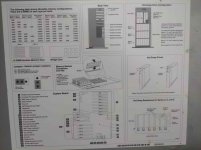
A very sad looking and dirty Model 60 (though I've definitely cleaned worse)


A box of SCSI cables and a box of power cables as well as filler trays and drive rails for the Model 95

A pair of complete Hot-Plug racks for my Model 95A (FINALLY). I can't tell you how long I've been looking for these

A seemingly NOS 768 Watt Astec PSU, as well as a box of SCSI trays and three SCSI backplanes for the PC Server 500 / 720
A... hold on a minute... A PC Server with six processors? What?


Okay, joking aside I actually had no idea the PC Server 720 was a multi-processor system. From what little information I had about it, I assumed it was effectively a PC Server 500 that just had PCI slots. Turns out I was completely wrong and this in fact is a system capable of taking up to six processors (either 100 / 133 or 166Mhz Pentiums) and 512Mb of ECC memory, or up to five processors and 1Gb of ECC memory. It also has eight combination MicroChannel / PCI slots and much like it's brother, the Server 500, it can take up to eighteen hard-disks. Mine also as a CD-ROM drive, DDS drive, a DDS tape and some floppies that undoubtedly have system software and a backup on them and even the key for the front panel.
I have yet to power it on and test it (want to clean it and check for bad capacitors first), but as of yet I know very little about it. Aside from the page covering parts of it over on Ardent Tool, I've found very little information on specific stuff, like how it utilizes more than one processor. I doubt it functions like SMP as we know it now.
Anyways, I'll be sure to update this post once I clean it, check it and attempt to power it on. So far though, this is looking like it's possibly my greatest vintage computing find!
Oh, and here's a photo of the diagram on the side panel for those who are interested;

